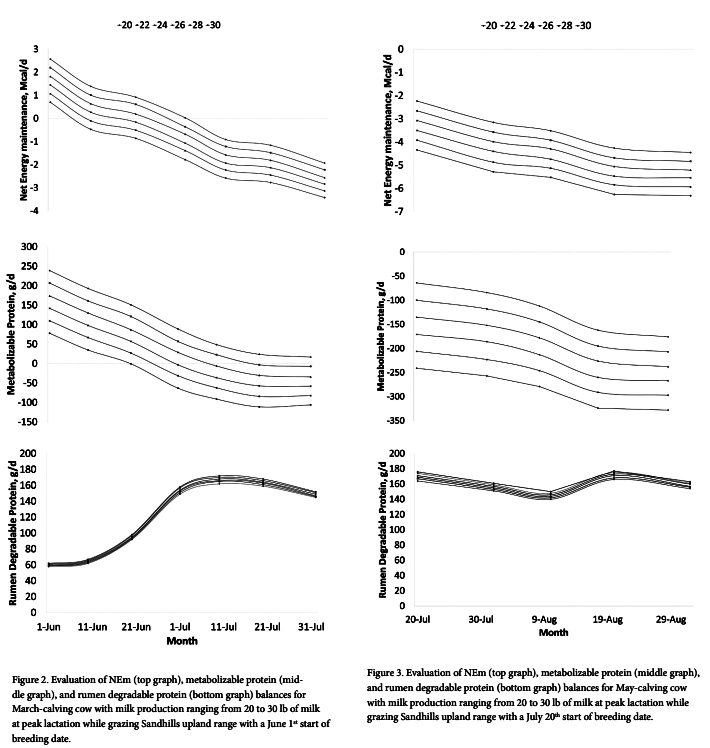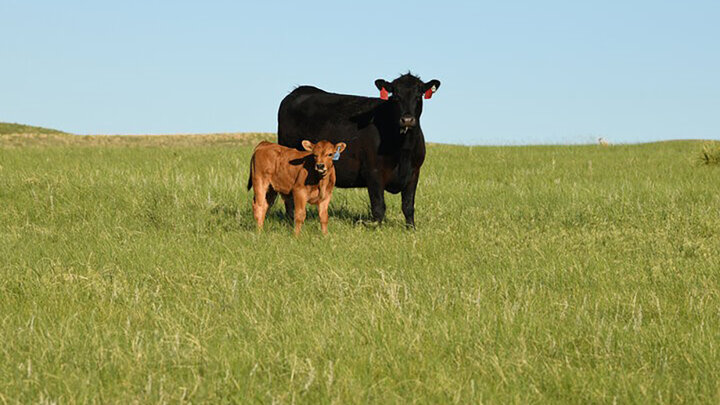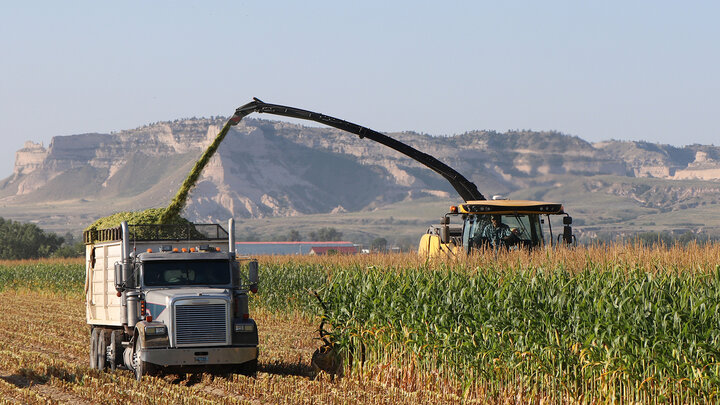Calving seasons in the northern panhandle vary from late winter to early summer. Regardless of timing, all operations must consider the cows’ nutrient demands after calving to ensure a successful breeding season. Differences in forage quality throughout the grazing season should be compared against cows’ nutrient demands to inform supplementation decisions.
A 2019 study by Mulliniks and Adams modeled nutrient balance in 1200-lb, 4-year-old cows (BCS 5) across six milk production levels (20–30 lb/day). Breeding season nutrient requirements for cows with differing calving seasons and milk production were determined using the 2016 Nutrient Requirements of Beef Cattle. This was compared against the nutrient availability of native range diets found at the University of Nebraska’s Gudmundsen Sandhills Laboratory (1997 Nebraska Beef Cattle Report, pp. 3-5).
Findings from this study revealed that both calving season and milk production had large impacts on nutrient balance for net energy (NE) and metabolizable protein (MP), or the energy and protein available for the animal to use. March-calving cows (modeled between June 1st and July 31) had positive NE and MP balance before June 21, when forage quality was highest, but were in a deficit when forage quality declined.

In comparison, May-calving cows (modeled between July 20 and August 29) began their breeding season in negative NE and MP balance, due to poorer forage quality in mid- to late-summer. Within both March- and May-calving cows, greater milk production accelerated negative NE and MP balance.
As producers look ahead to the breeding season, they should consider the stage of lactation and the level of milk production in their cowherds, which have implications on the nutrient demands during the breeding season. Negative nutrient balance causes the mobilization of fat to meet energy demands, resulting in lower body condition score, which is detrimental to reproductive success. Comparing forage nutrient content to cows’ nutrient demands can help determine if, when, and how much supplemental feed is necessary.
Nebraska Extension has personnel and resources available to help evaluate and address scenarios where available forage is inadequate to meet energy and protein requirements and aid in supplementation decisions.
The full version of this study can be found in the 2019 Beef Report: Mulliniks, Travis and Adams, Don C., "Evaluation of Lactation Demands on Nutrient Balance in Two Calving Seasons in Range Cows Grazing Sandhills Upland Range" (2019). Nebraska Beef Cattle Reports. 1043. http://digitalcommons.unl.edu/animalscinbcr/1043




